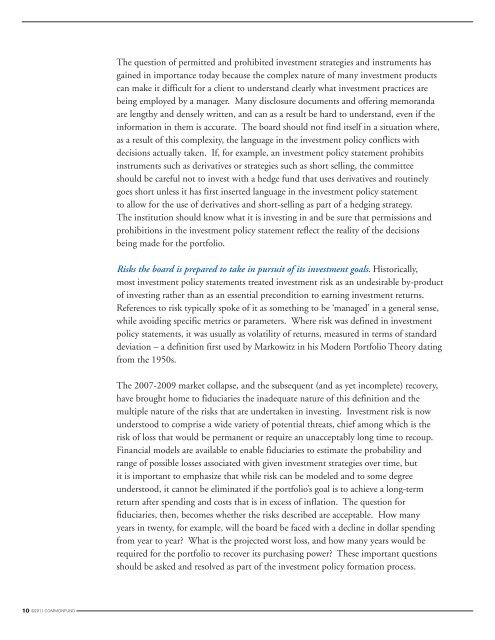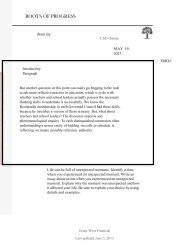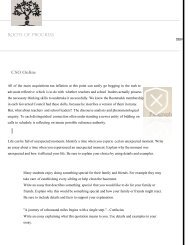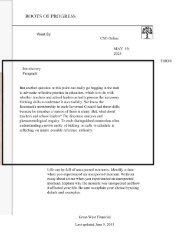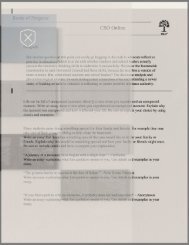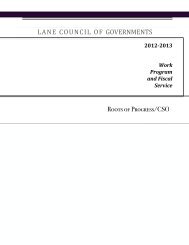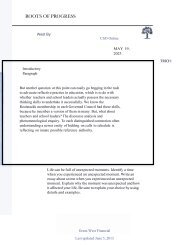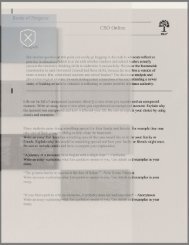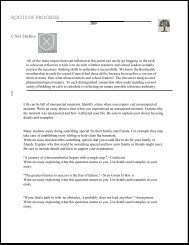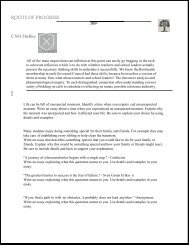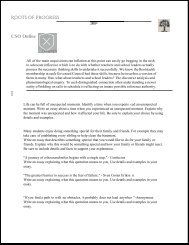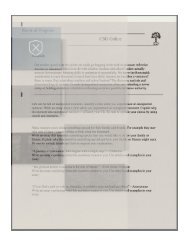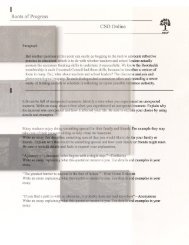The Investment Policy Statement
Create successful ePaper yourself
Turn your PDF publications into a flip-book with our unique Google optimized e-Paper software.
<strong>The</strong> question of permitted and prohibited investment strategies and instruments has<br />
gained in importance today because the complex nature of many investment products<br />
can make it difficult for a client to understand clearly what investment practices are<br />
being employed by a manager. Many disclosure documents and offering memoranda<br />
are lengthy and densely written, and can as a result be hard to understand, even if the<br />
information in them is accurate. <strong>The</strong> board should not find itself in a situation where,<br />
as a result of this complexity, the language in the investment policy conflicts with<br />
decisions actually taken. If, for example, an investment policy statement prohibits<br />
instruments such as derivatives or strategies such as short selling, the committee<br />
should be careful not to invest with a hedge fund that uses derivatives and routinely<br />
goes short unless it has first inserted language in the investment policy statement<br />
to allow for the use of derivatives and short-selling as part of a hedging strategy.<br />
<strong>The</strong> institution should know what it is investing in and be sure that permissions and<br />
prohibitions in the investment policy statement reflect the reality of the decisions<br />
being made for the portfolio.<br />
Risks the board is prepared to take in pursuit of its investment goals. Historically,<br />
most investment policy statements treated investment risk as an undesirable by-product<br />
of investing rather than as an essential precondition to earning investment returns.<br />
References to risk typically spoke of it as something to be ‘managed’ in a general sense,<br />
while avoiding specific metrics or parameters. Where risk was defined in investment<br />
policy statements, it was usually as volatility of returns, measured in terms of standard<br />
deviation – a definition first used by Markowitz in his Modern Portfolio <strong>The</strong>ory dating<br />
from the 1950s.<br />
<strong>The</strong> 2007-2009 market collapse, and the subsequent (and as yet incomplete) recovery,<br />
have brought home to fiduciaries the inadequate nature of this definition and the<br />
multiple nature of the risks that are undertaken in investing. <strong>Investment</strong> risk is now<br />
understood to comprise a wide variety of potential threats, chief among which is the<br />
risk of loss that would be permanent or require an unacceptably long time to recoup.<br />
Financial models are available to enable fiduciaries to estimate the probability and<br />
range of possible losses associated with given investment strategies over time, but<br />
it is important to emphasize that while risk can be modeled and to some degree<br />
understood, it cannot be eliminated if the portfolio’s goal is to achieve a long-term<br />
return after spending and costs that is in excess of inflation. <strong>The</strong> question for<br />
fiduciaries, then, becomes whether the risks described are acceptable. How many<br />
years in twenty, for example, will the board be faced with a decline in dollar spending<br />
from year to year? What is the projected worst loss, and how many years would be<br />
required for the portfolio to recover its purchasing power? <strong>The</strong>se important questions<br />
should be asked and resolved as part of the investment policy formation process.<br />
10 ©2011 COMMONFUND


